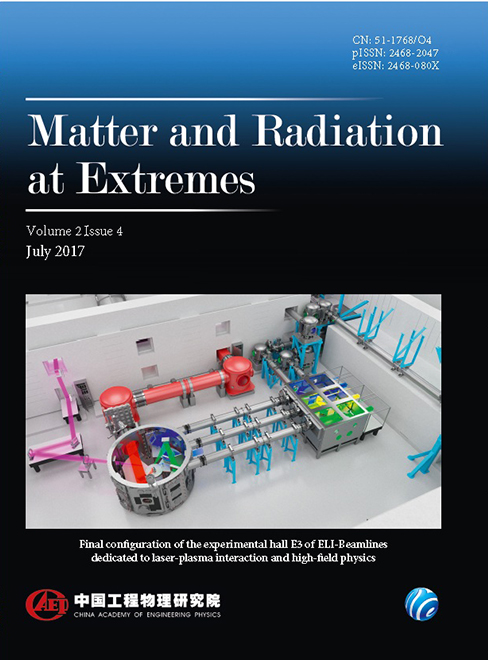
This erratum1 is issued by the authors to note that the caption of Fig. 10 refers the reader to Table III in the published version of the manuscript, while the correct reference is to...
The Editors of Matter and Radiation at Extremes (MRE) wish to express their deepest gratitude to the following individuals who generously provided advice on manuscripts as reviewers for MRE in the year of 2019 (names are listed in
Properties of atoms and molecules undergo significant changes when subjected to spatial confinement. We study the excitation spectra of lithium-like atoms in the initial 1s22s electronic configuration when confined by an impenetra
The emergence of a new era reaching beyond current state-of-the-art ultrashort and ultraintense laser technology has been enabled by the approval of around € 850 million worth of structural funds in 2011–2012 by the European Commi
Recent reports of the superconductivity in hydrides of two different families (covalent lattice, as in SH3 and clathrate-type H-cages containing La and Y atoms, as in LaH10 and YH6) have revealed new families of high-Tc materials
Using the SG-III prototype laser at China Academy of Engineering Physics, Mianyang, we irradiated polystyrene (CH) samples with a thermal radiation drive, reaching conditions on the principal Hugoniot up to P ≈ 1 TPa (10 Mbar), an
Z-pinch experiments with a hybrid configuration of a deuterium gas puff have been carried out on the HAWK (NRL, Washington, DC) and GIT-12 (IHCE, Tomsk) pulsed power generators at 0.7 MA and 3 MA currents, respectively. On GIT-12,
The first Dense Z-Pinch (DZP) conference, in 1984, marked an attempt to use then-modern pulsed power with a Z-pinch to work toward thermonuclear fusion energy. This 11th DZP conference in China is a good time to look back, to comm












